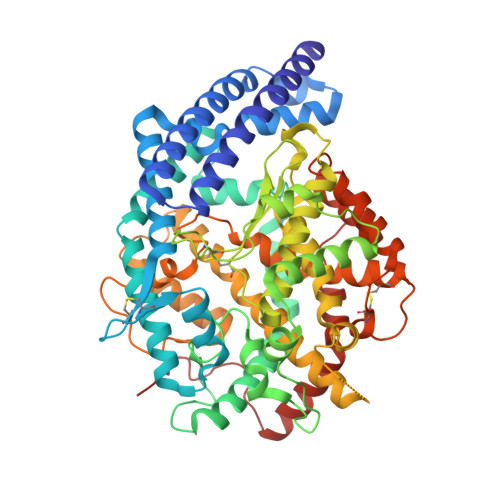Novel Mechanism of Inhibition of Human Angiotensin-I-Converting Enzyme (Ace) by a Highly Specific Phosphinic Tripeptide.
Akif, M., Schwager, S.L., Anthony, C.S., Czarny, B., Beau, F., Dive, V., Sturrock, E.D., Acharya, K.R.(2011) Biochem J 436: 53
- PubMed: 21352096
- DOI: https://doi.org/10.1042/BJ20102123
- Primary Citation of Related Structures:
2XY9, 2XYD - PubMed Abstract:
Human ACE (angiotensin-I-converting enzyme) has long been regarded as an excellent target for the treatment of hypertension and related cardiovascular diseases. Highly potent inhibitors have been developed and are extensively used in the clinic. To develop inhibitors with higher therapeutic efficacy and reduced side effects, recent efforts have been directed towards the discovery of compounds able to simultaneously block more than one zinc metallopeptidase (apart from ACE) involved in blood pressure regulation in humans, such as neprilysin and ECE-1 (endothelin-converting enzyme-1). In the present paper, we show the first structures of testis ACE [C-ACE, which is identical with the C-domain of somatic ACE and the dominant domain responsible for blood pressure regulation, at 1.97Å (1 Å=0.1 nm)] and the N-domain of somatic ACE (N-ACE, at 2.15Å) in complex with a highly potent and selective dual ACE/ECE-1 inhibitor. The structural determinants revealed unique features of the binding of two molecules of the dual inhibitor in the active site of C-ACE. In both structures, the first molecule is positioned in the obligatory binding site and has a bulky bicyclic P(1)' residue with the unusual R configuration which, surprisingly, is accommodated by the large S(2)' pocket. In the C-ACE complex, the isoxazole phenyl group of the second molecule makes strong pi-pi stacking interactions with the amino benzoyl group of the first molecule locking them in a 'hand-shake' conformation. These features, for the first time, highlight the unusual architecture and flexibility of the active site of C-ACE, which could be further utilized for structure-based design of new C-ACE or vasopeptidase inhibitors.
Organizational Affiliation:
Department of Biology and Biochemistry, University of Bath, Claverton Down, Bath BA2 7AY, UK.





















